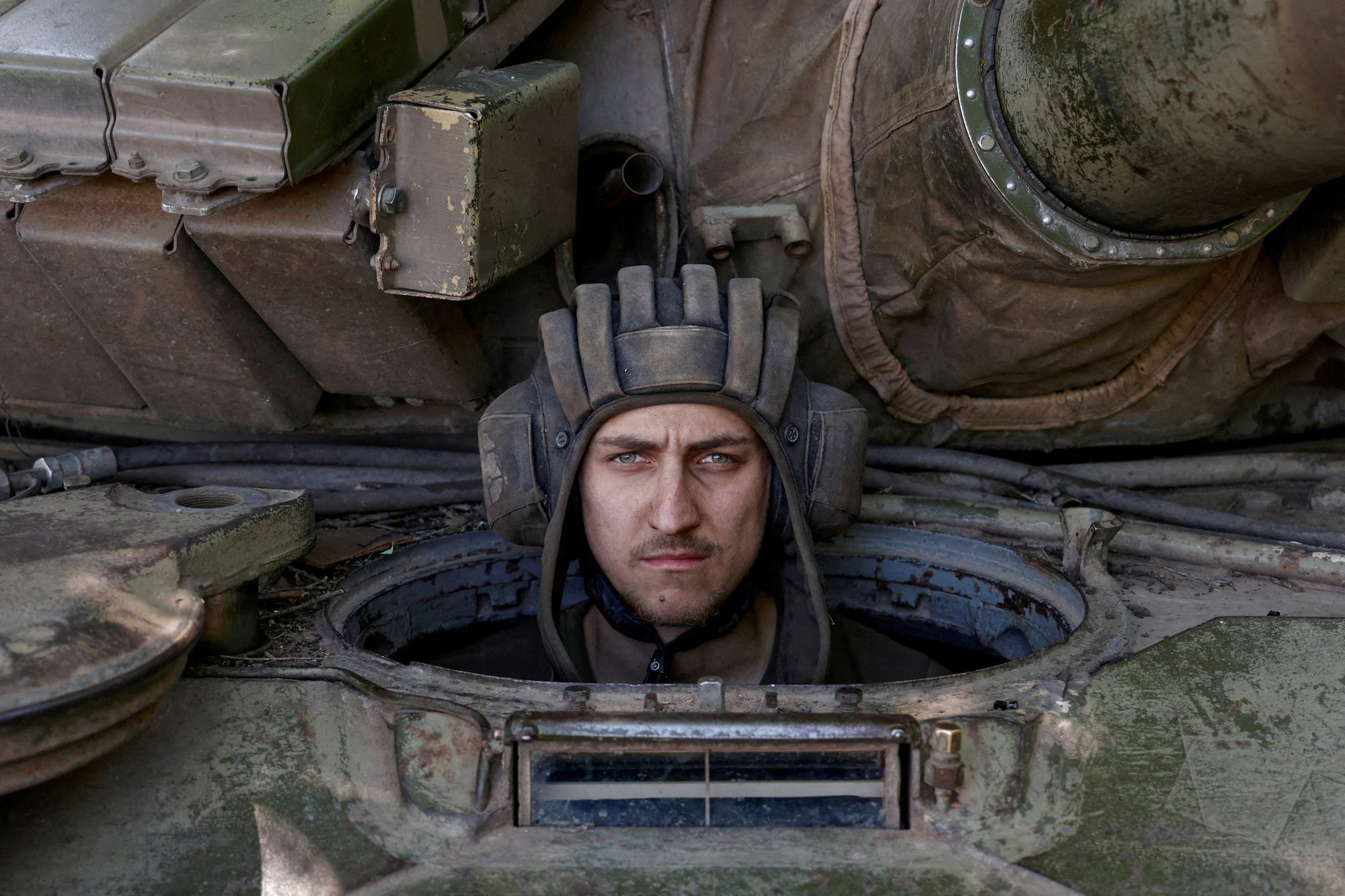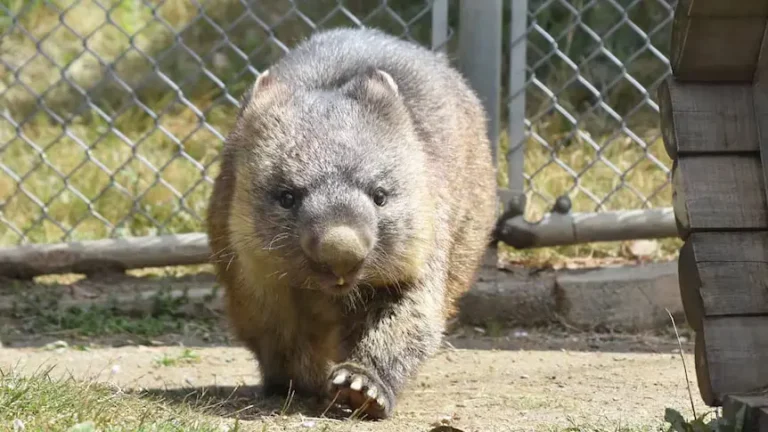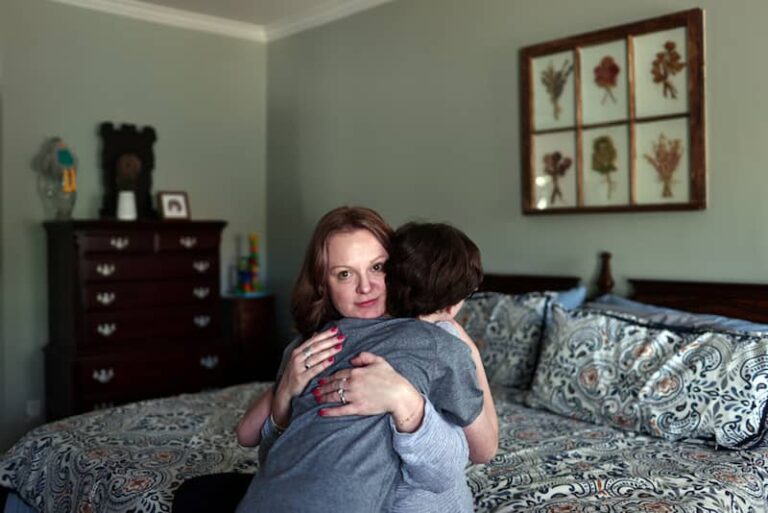Thousands have died in the conflict, while millions have been displaced and cities left in ruins. “When you attack us, you will see our faces. Not our backs, but our faces,” declared Ukrainian President Volodymur Zelensky when Russia launched its attack in Kyiv.
As the invasion began, hundreds of people headed for the Polish border on foot, trudging along the highway’s trash-strewn verge in sub-zero temperatures with children, pets and whatever possessions they had the strength left to carry, while those who remain in Ukraine are fighting for their freedom.
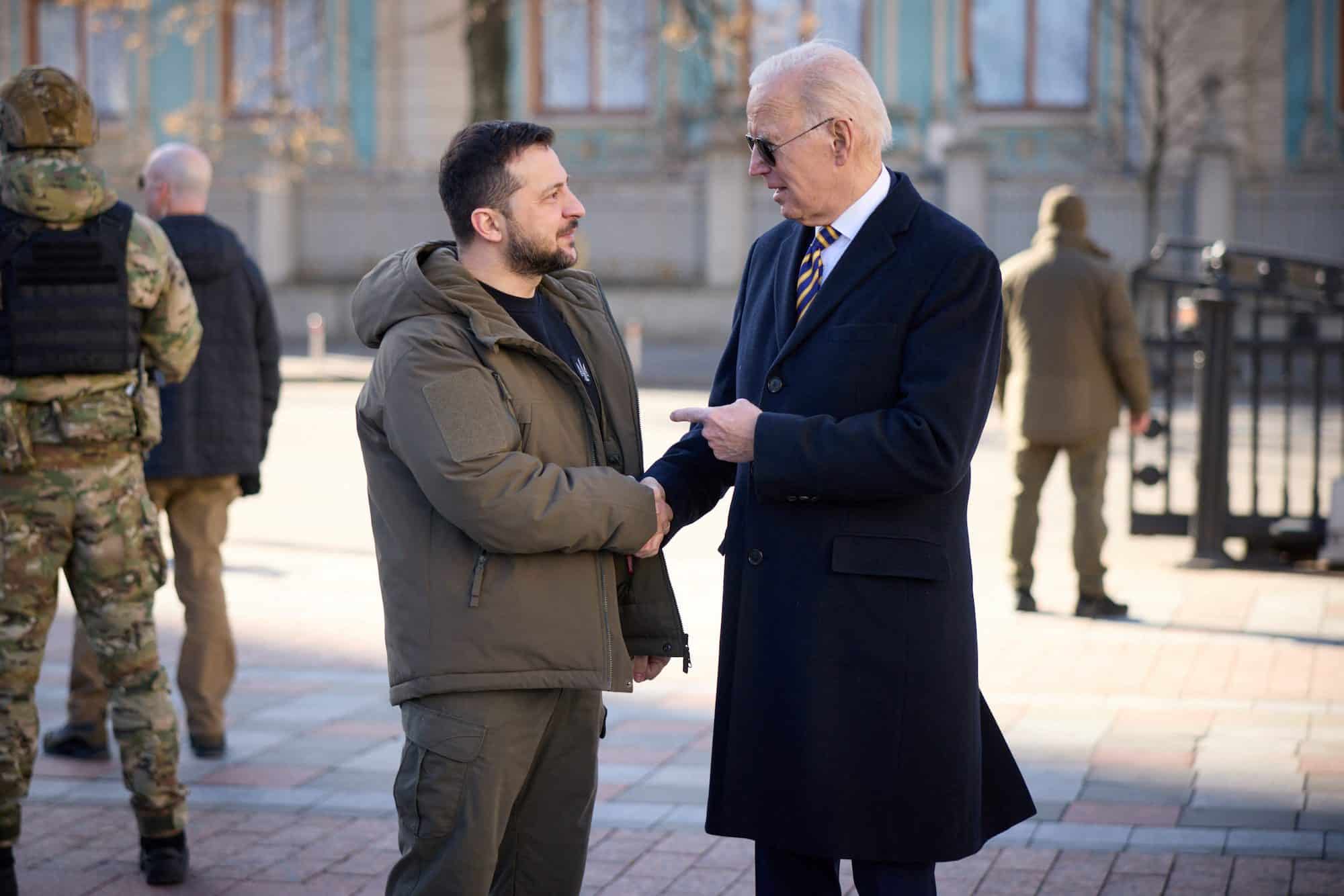
On 20 February, US President Joe Biden demonstrated his support for Ukraine by visiting the war-torn city with President Zelensky.
“There will continue to be hard and very bitter days, victories and tragedies,” he said. “But Ukraine is steeled for the fight ahead and the United States, together with our allies and partners, are going to continue to have Ukraine’s back as it defends itself.”

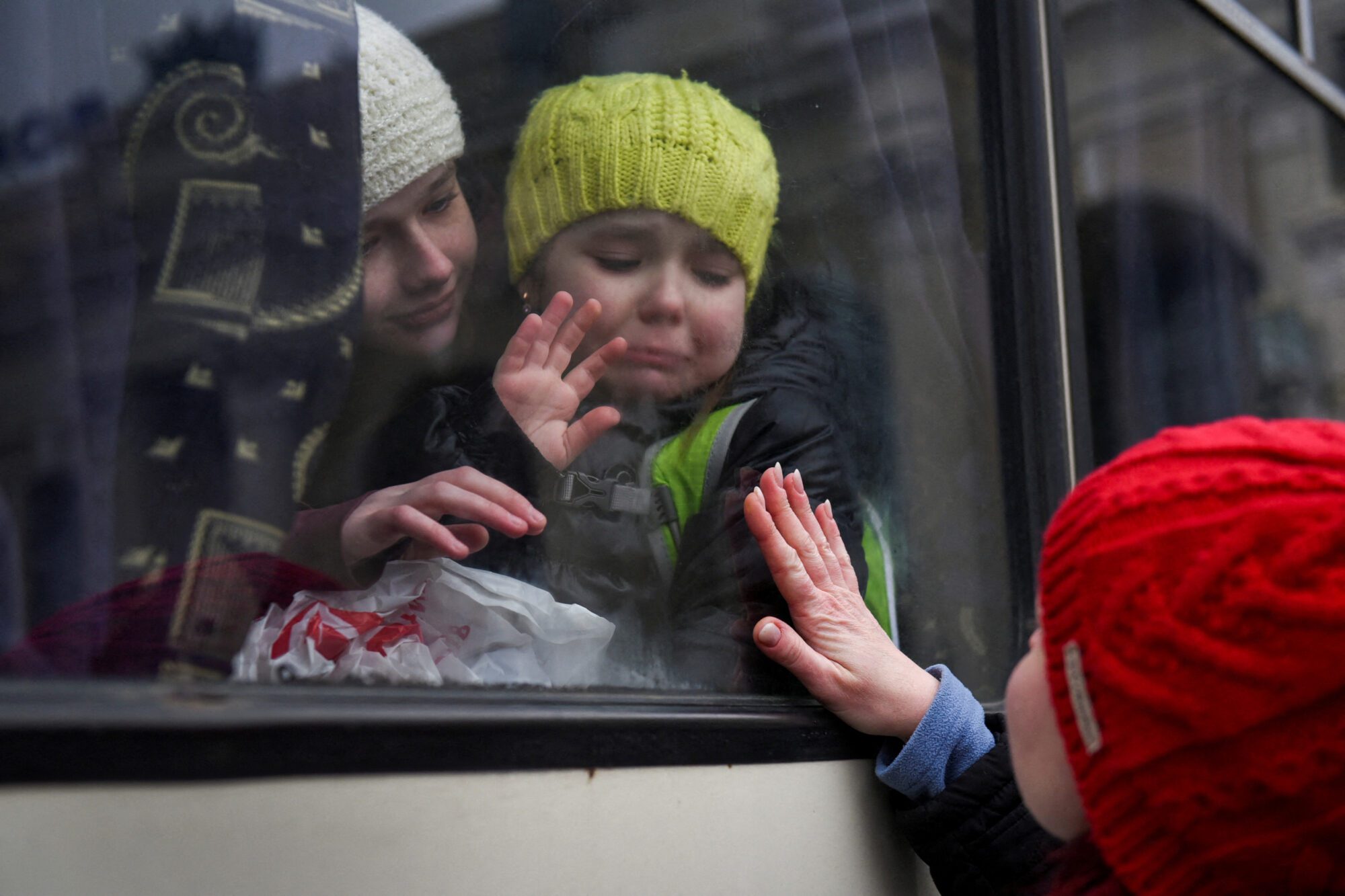
Below newlyweds, medical volunteers, nurse in an oncology clinic and doctor before the start of the Russian invasion of Ukraine, Nastya Gracheva and Anton Sokolov, pose for a photograph in aruined courtyard of shopping and office complex in central Kharkiv on April 3, 2022. – From the beginning of the Russian aggression, they began to provide free medical care to those in need at home, and when they ran out of medicines, they began to collect money and purchase medicines for residents of the city who needed them.
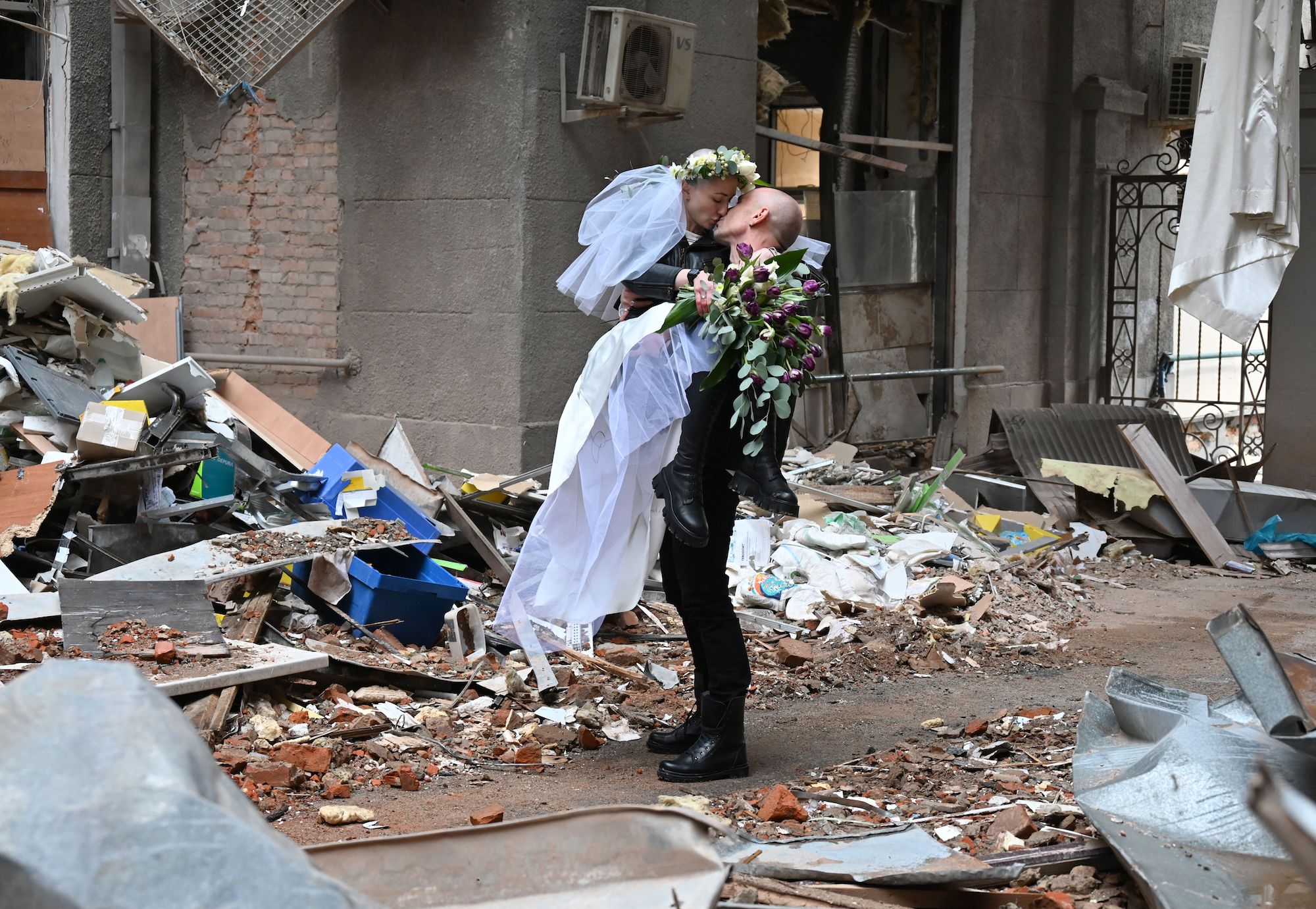
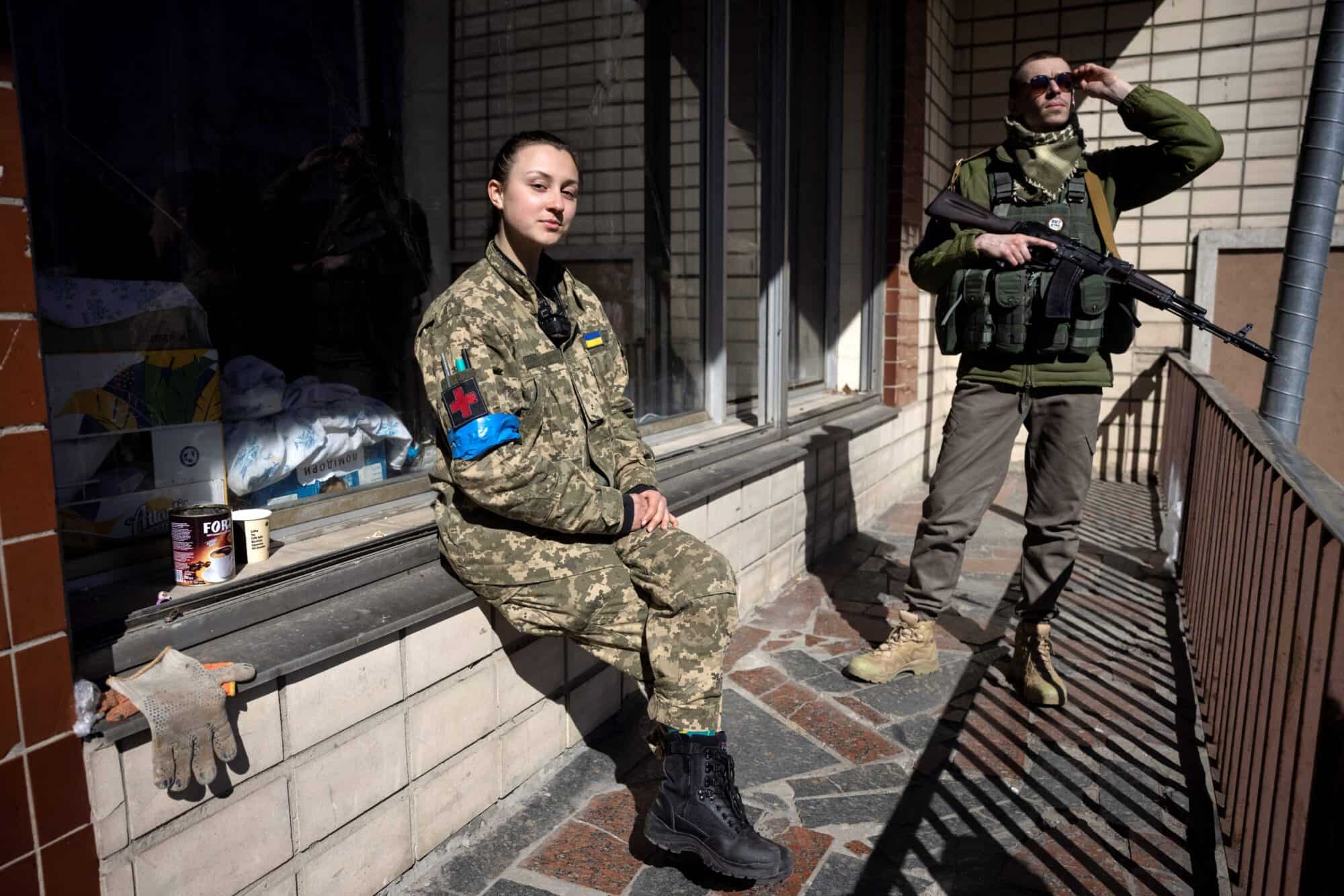
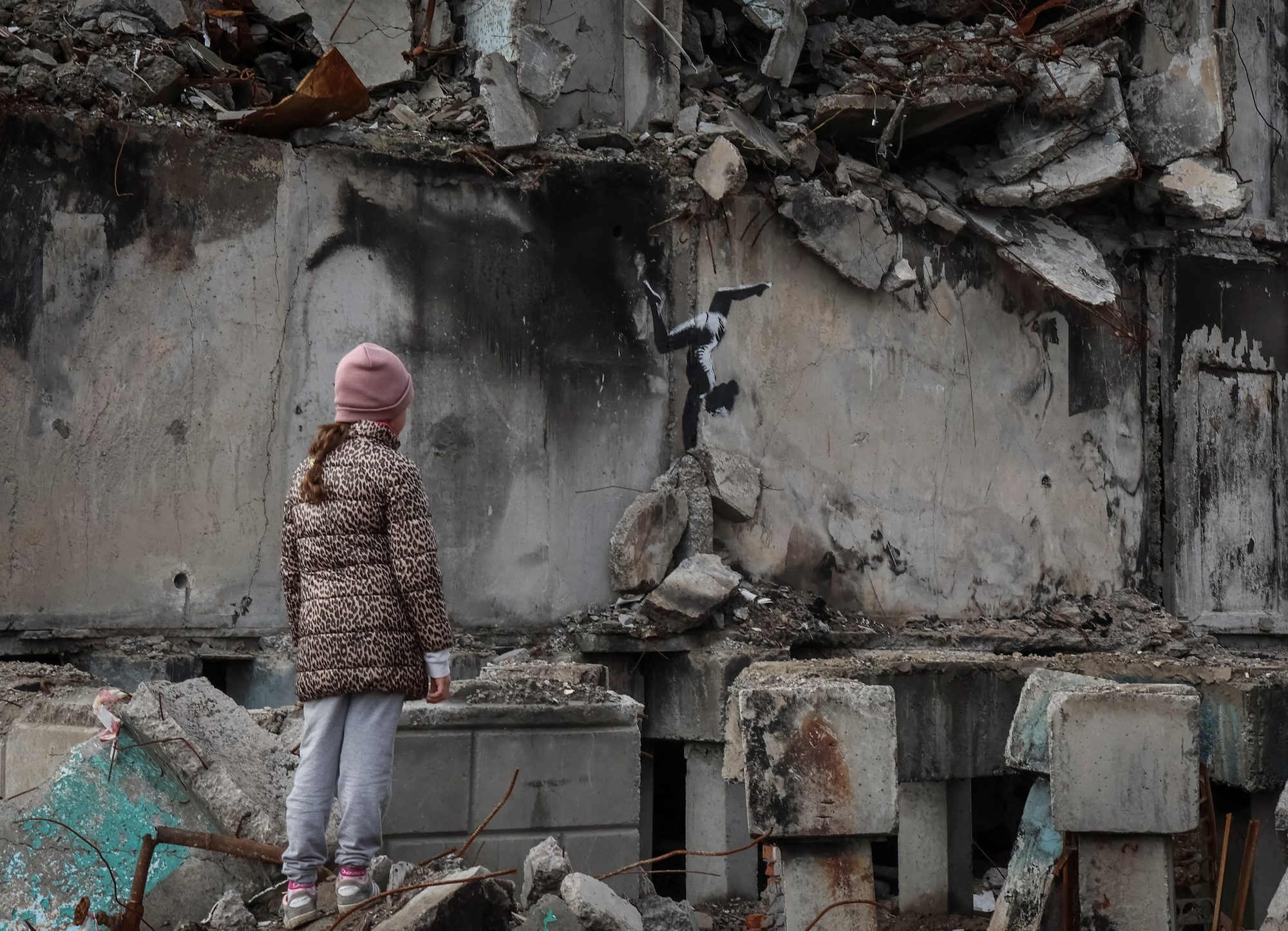
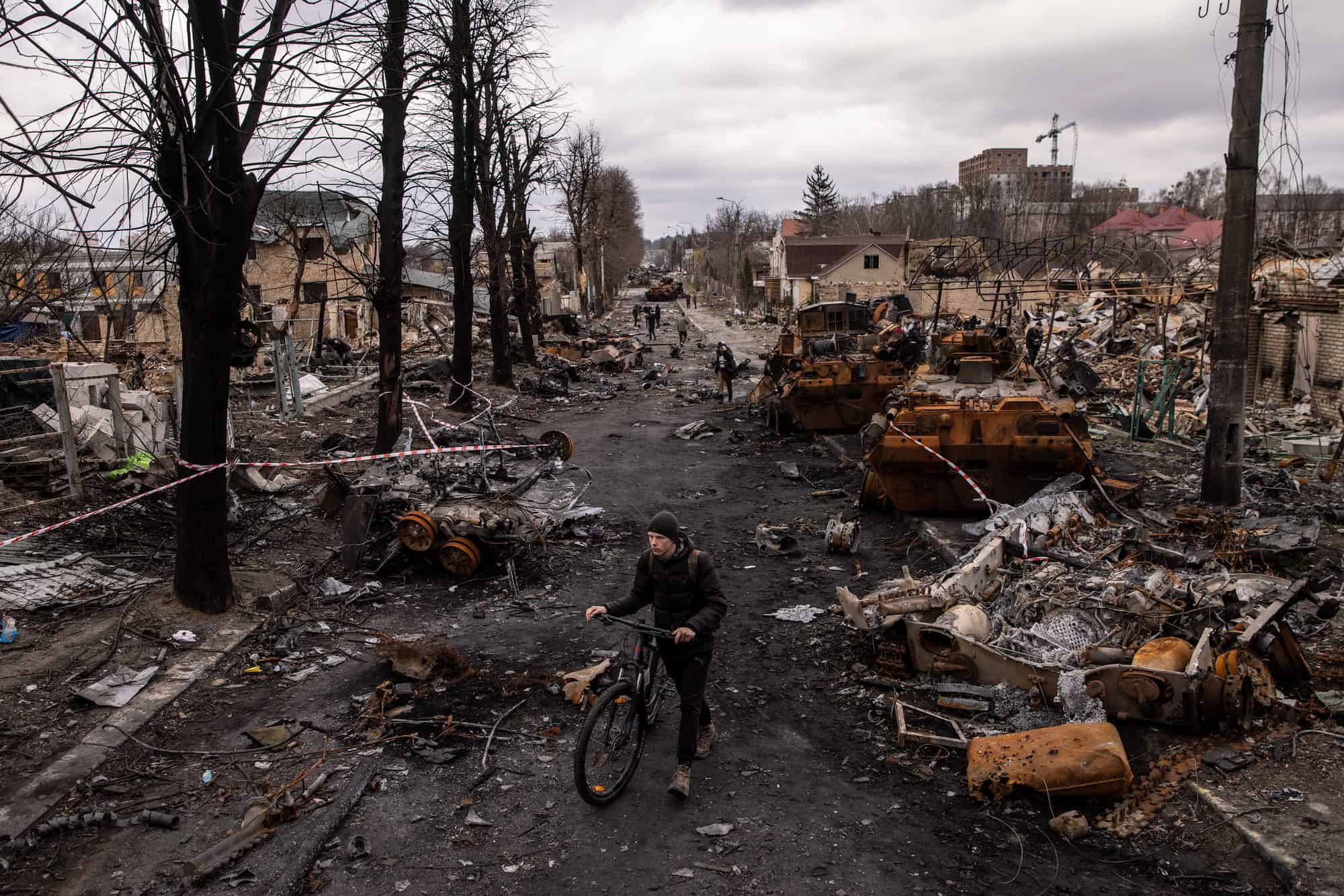
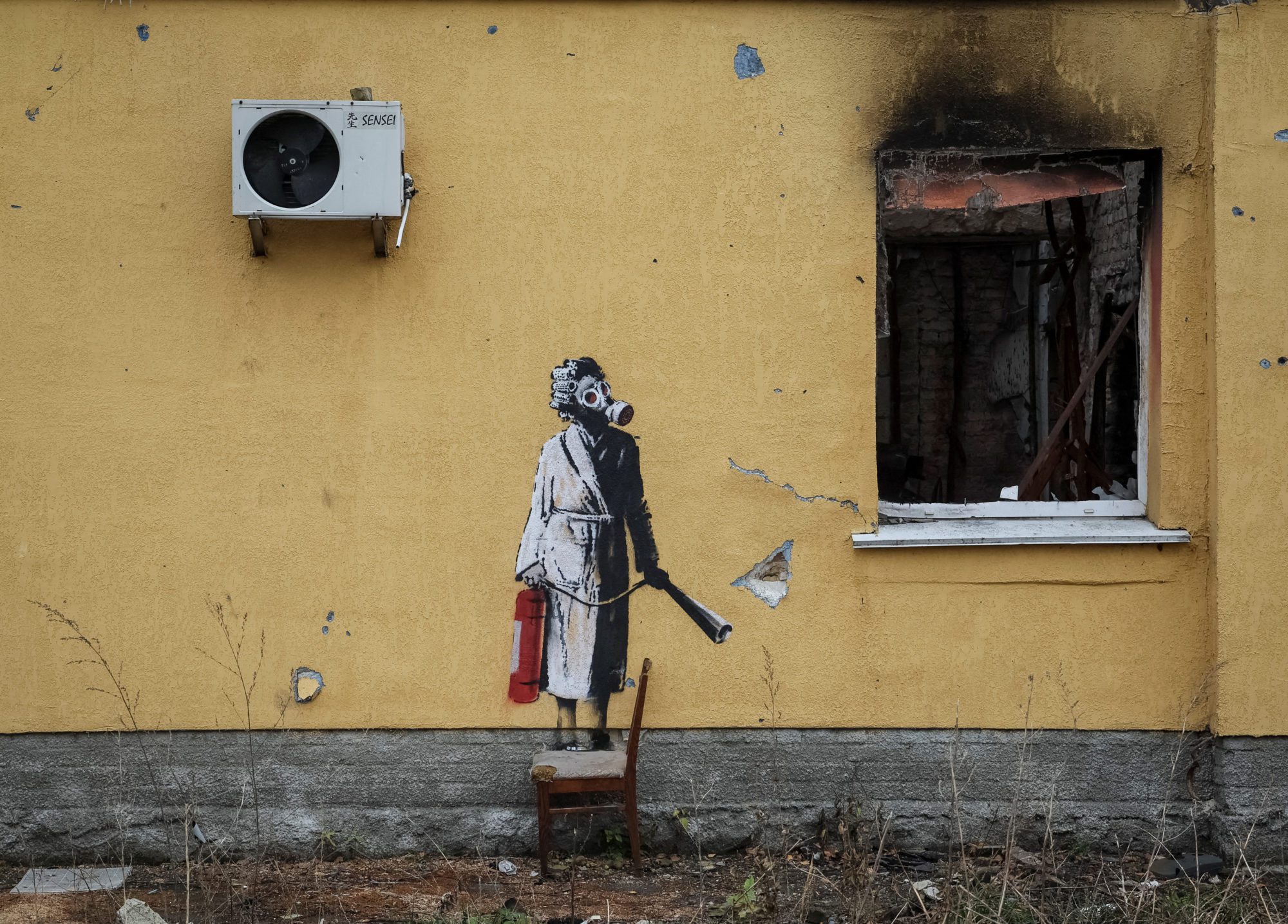
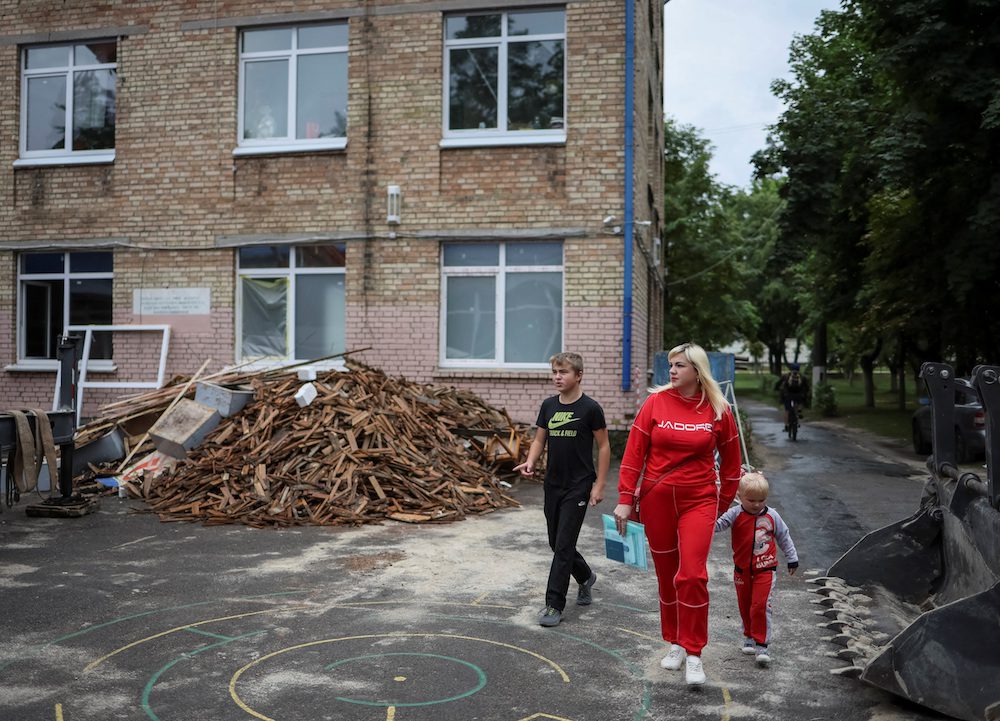
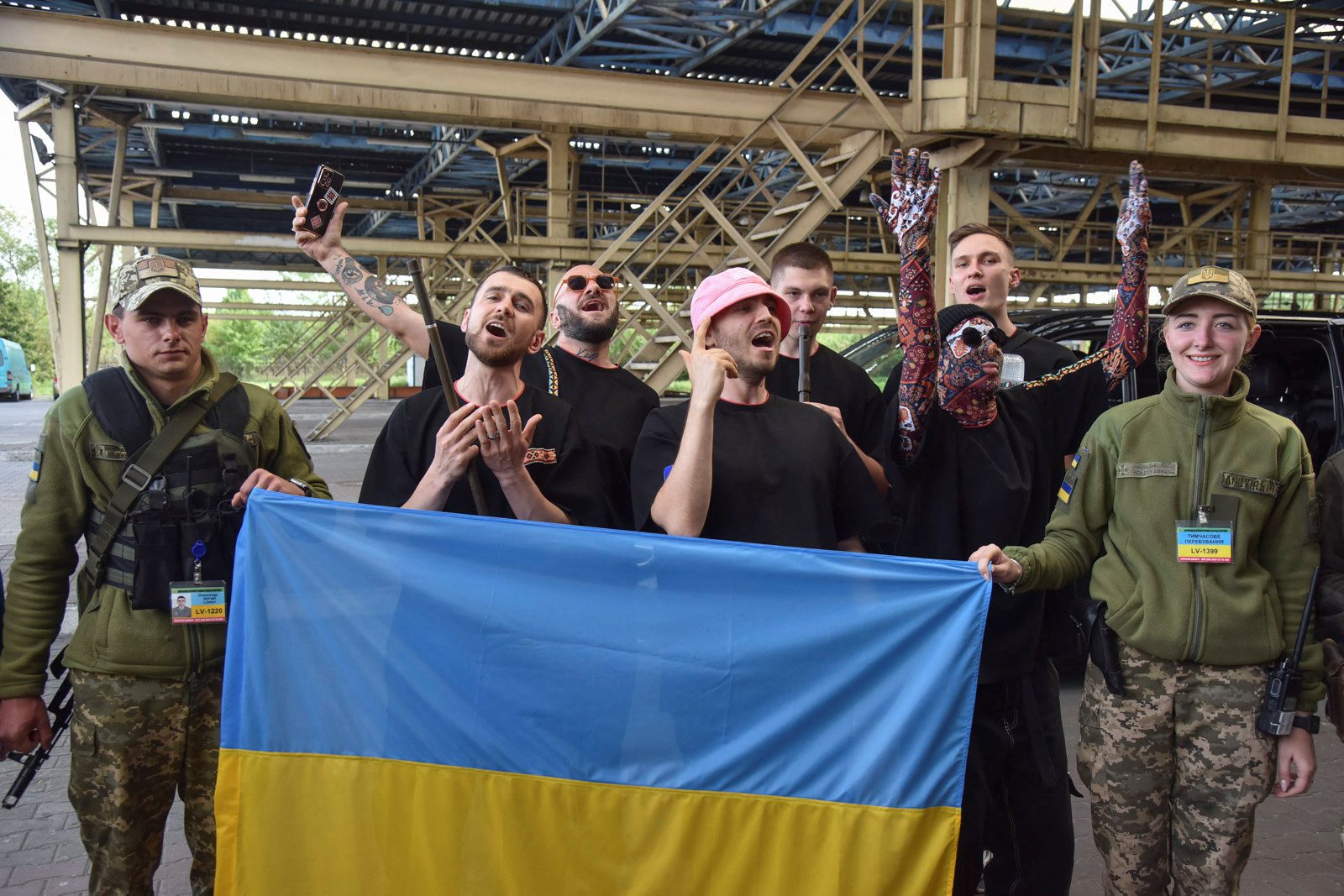
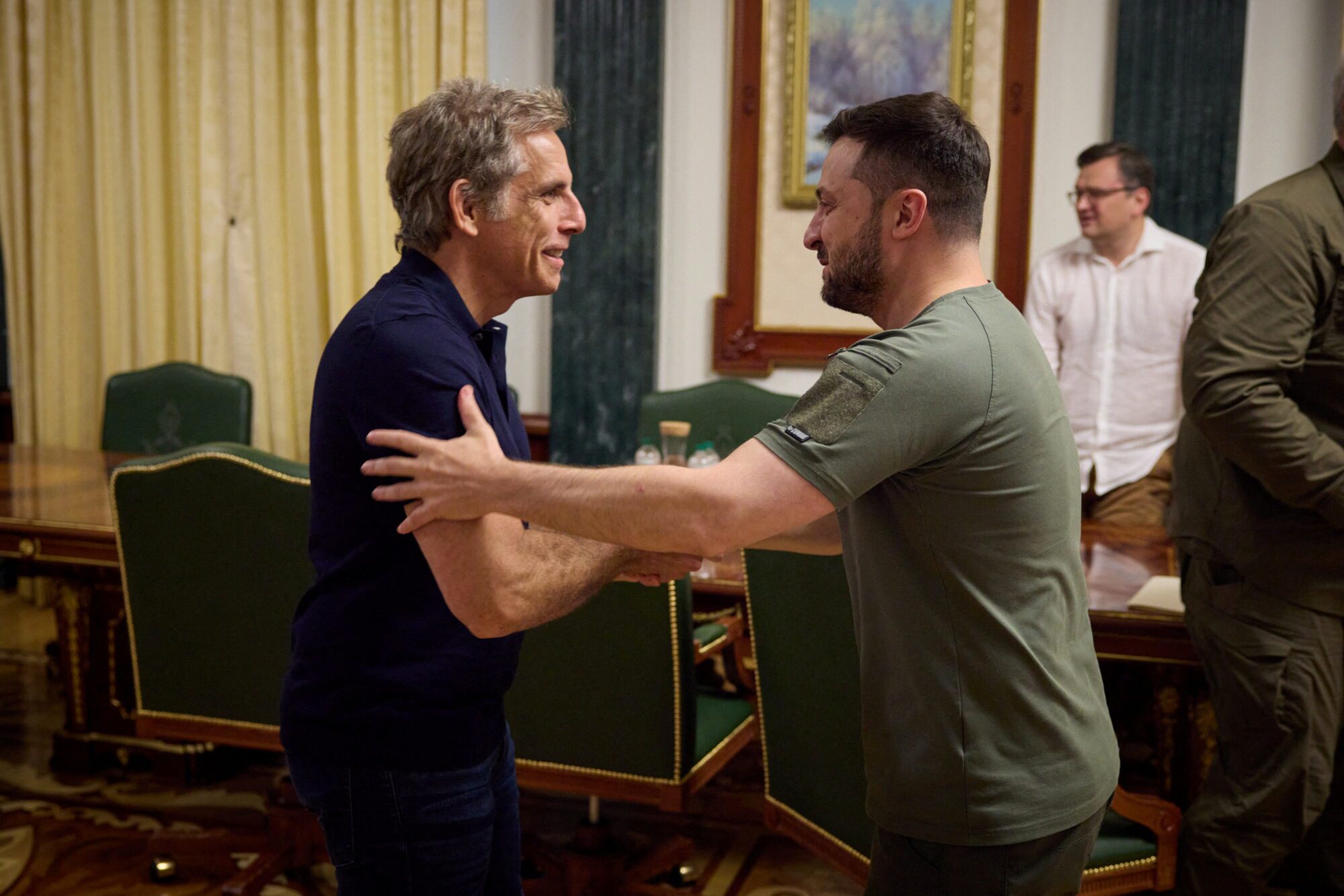

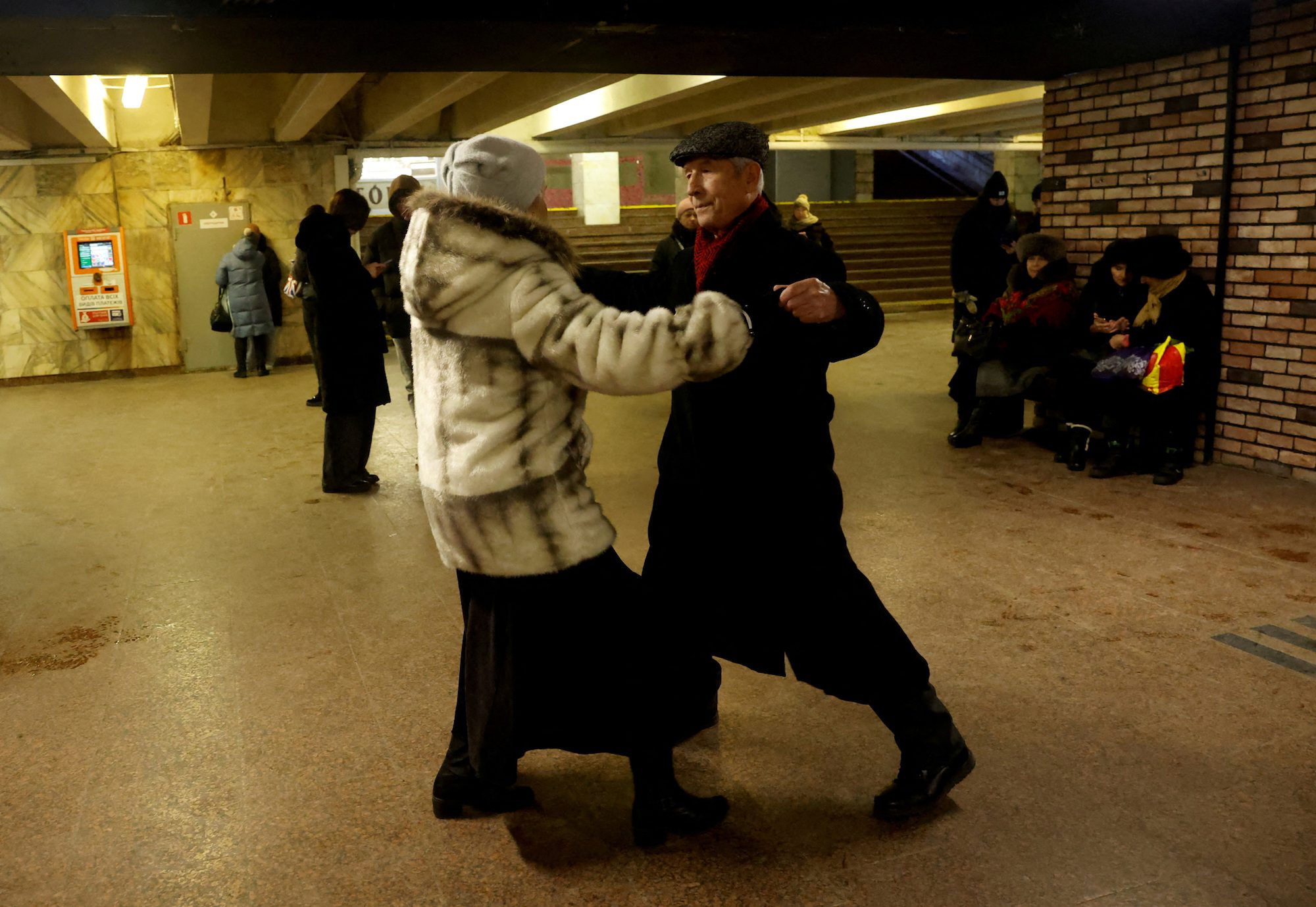
Local resident Tamara, 71, cries in front of an apartment building destroyed during Ukraine-Russia conflict in the southern port city of Mariupol, Ukraine April 19, 2022.
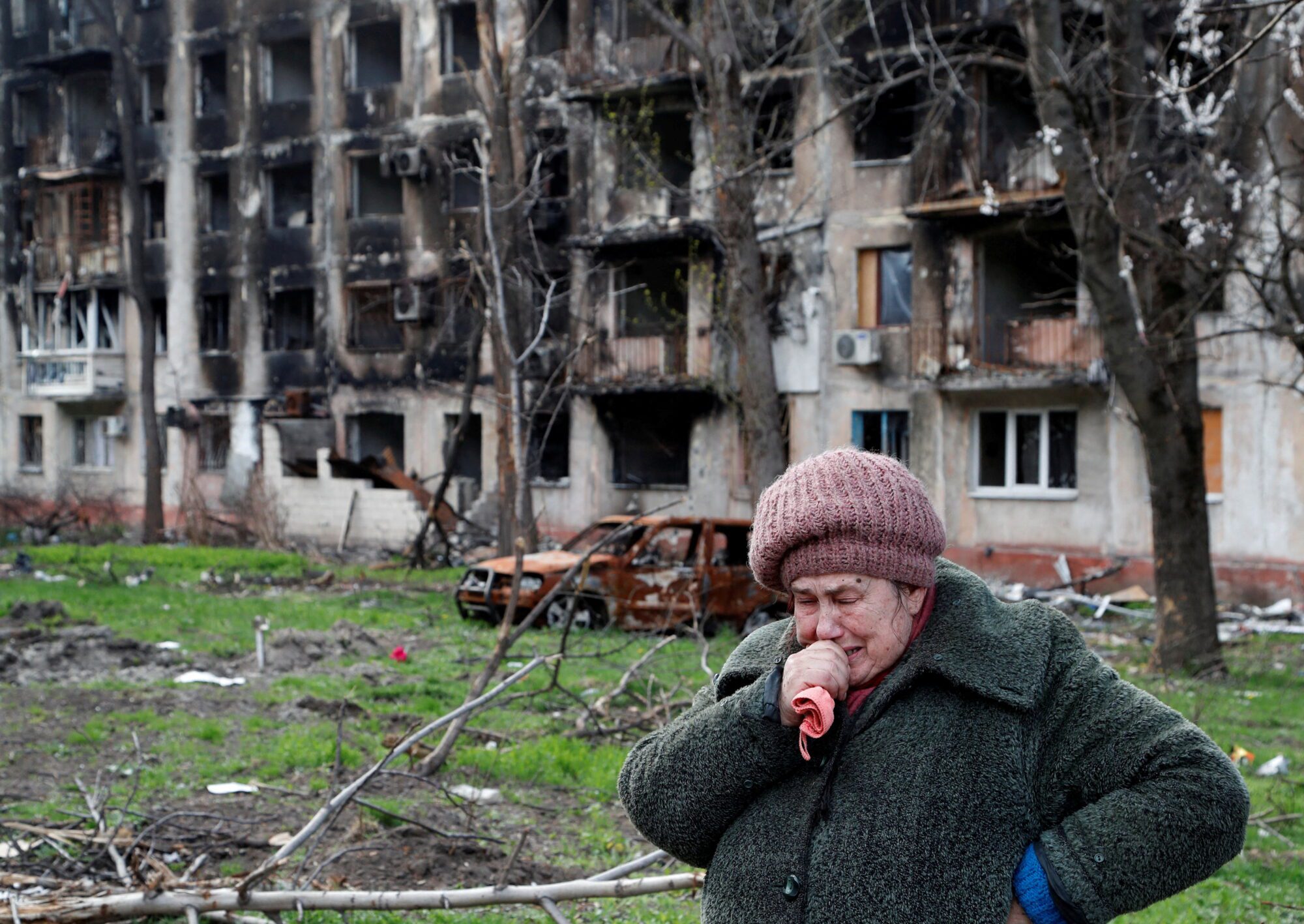
The Ukrainian government has shared a shocking video urging global leaders to close the skies over Ukraine (warning: graphic content).
Every day Russia bombs Ukrainian cities, destroys them, hits residential areas, killing civilians.
Help us to stop it! Close the sky over Ukraine!#closeUAskyNow pic.twitter.com/pV675N0V0U
— MFA of Ukraine 🇺🇦 (@MFA_Ukraine) March 16, 2022
In Kyiv, an elderly man is seen rummaging through his belongings in a building destroyed by a Russian missile.
#Kyiv A man collects his ownings in a house destroyed by a Russian missile.
Russia continues attacking civilians in various Ukrainian cities.#StopRussia #StandWithUkraine #StopRussianAggression#RuSSiaKills#StopPutin pic.twitter.com/OtYvi4AXJB— UCMC (@uacrisis) March 21, 2022
A woman cries next to her children after fleeing from Russia’s invasion of Ukraine, at the border crossing in Siret, Romania, February 28, 2022. REUTERS/Stoyan Nenov
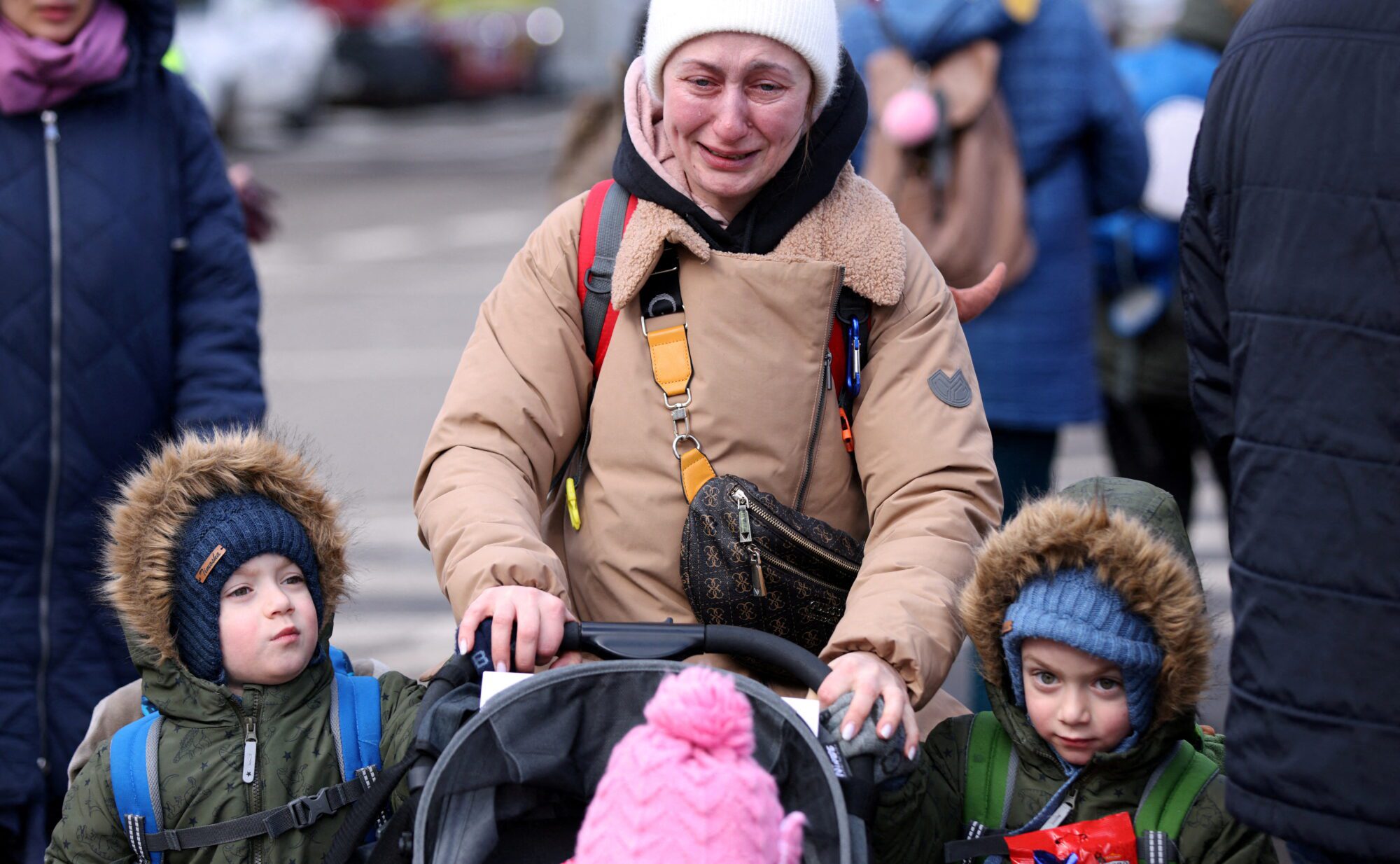
In Kharkiv, shells of Russian missiles lie on the street.
Kharkiv, Europe, now.#StopRussia #StandWithUkraine pic.twitter.com/IWuMbig9c9
— SPRAVDI — Stratcom Centre (@StratcomCentre) March 22, 2022
A Ukrainian soldier plays the state anthem on a violin.
State Anthem of Ukraine played the violin by a Ukrainian defender. #UkraineWillWin pic.twitter.com/7Gxcd9SLHE
— UkraineWorld (@ukraine_world) March 18, 2022
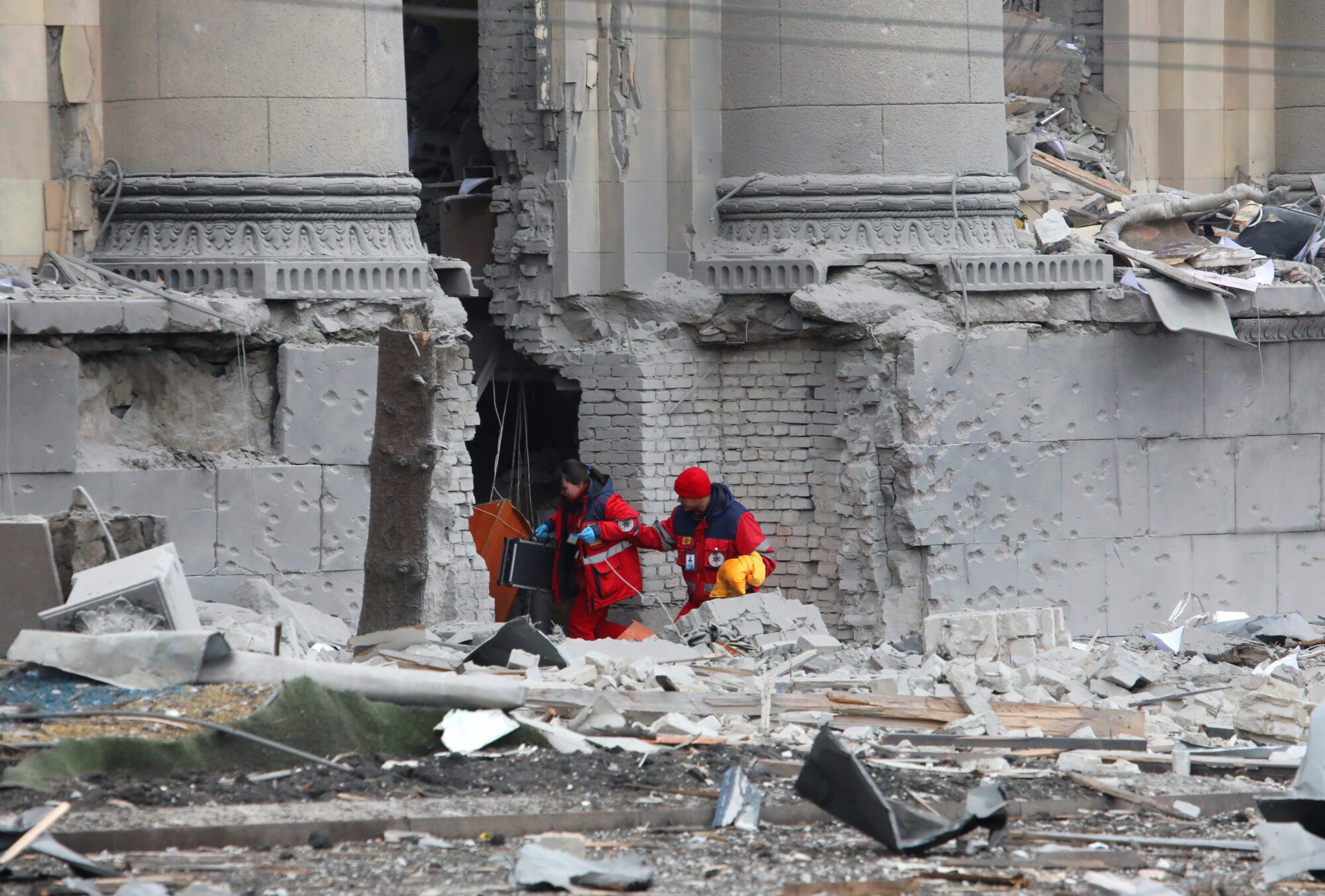
Medics walk outside the regional administration building, which city officials said was hit by a missile attack, in central Kharkiv, Ukraine, March 1, 2022. REUTERS/Vyacheslav Madiyevskyy
75-year-old Larysa Oleksandrivna stands in front of the ruined facade of her building in the #Kharkiv residential area. Oleksandrivna now lives next door, but there is no heating.
Photo: Andrii Bashtovyi (@nomoreanry) for The Guardian. #StopRussia pic.twitter.com/rnQShrG0GZ
— SPRAVDI — Stratcom Centre (@StratcomCentre) March 18, 2022
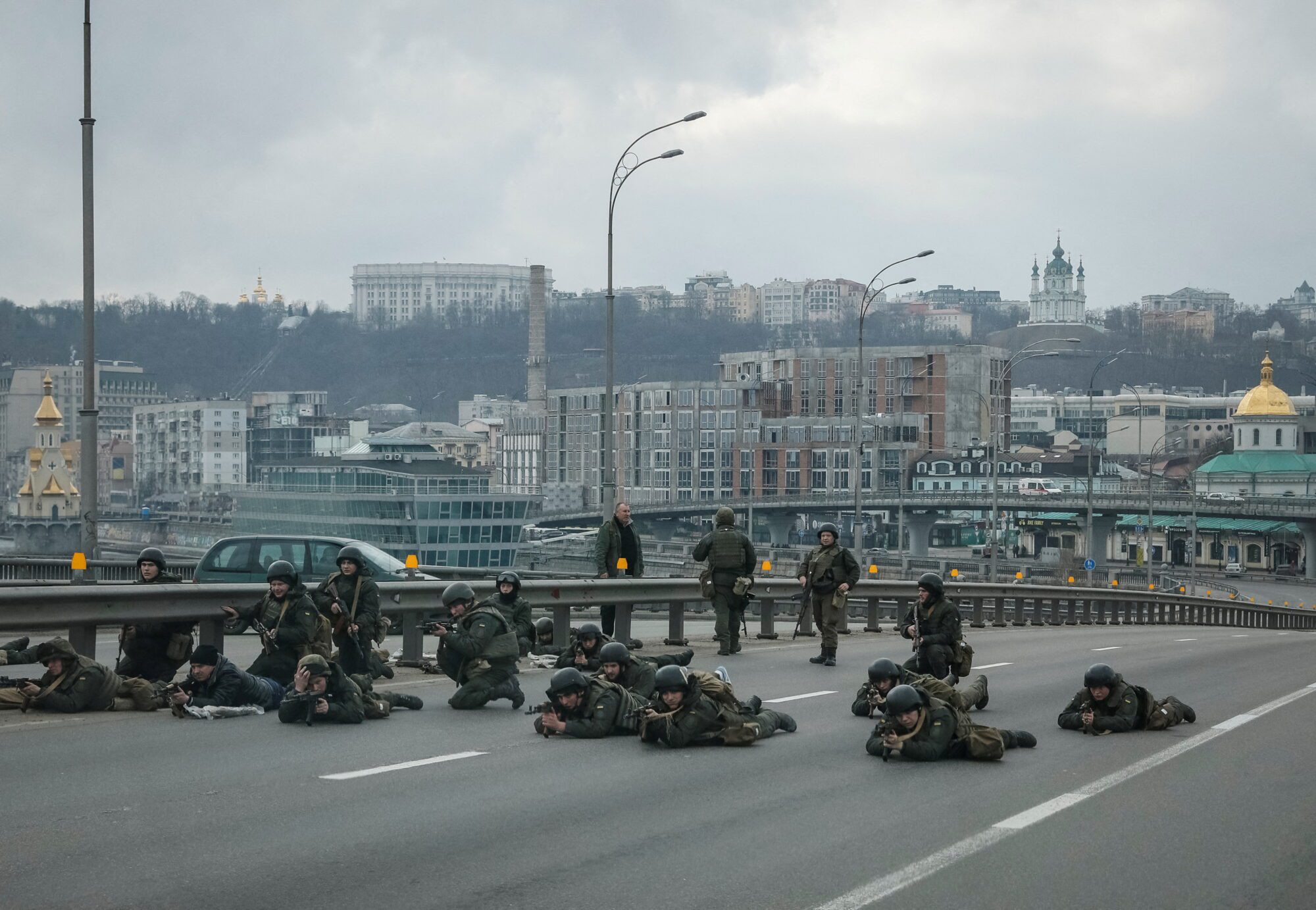
Servicemen of the Ukrainian National Guard take positions in central Kyiv, after Russia launched a massive military operation against Ukraine, February 25, 2022. REUTERS/Gleb Garanich
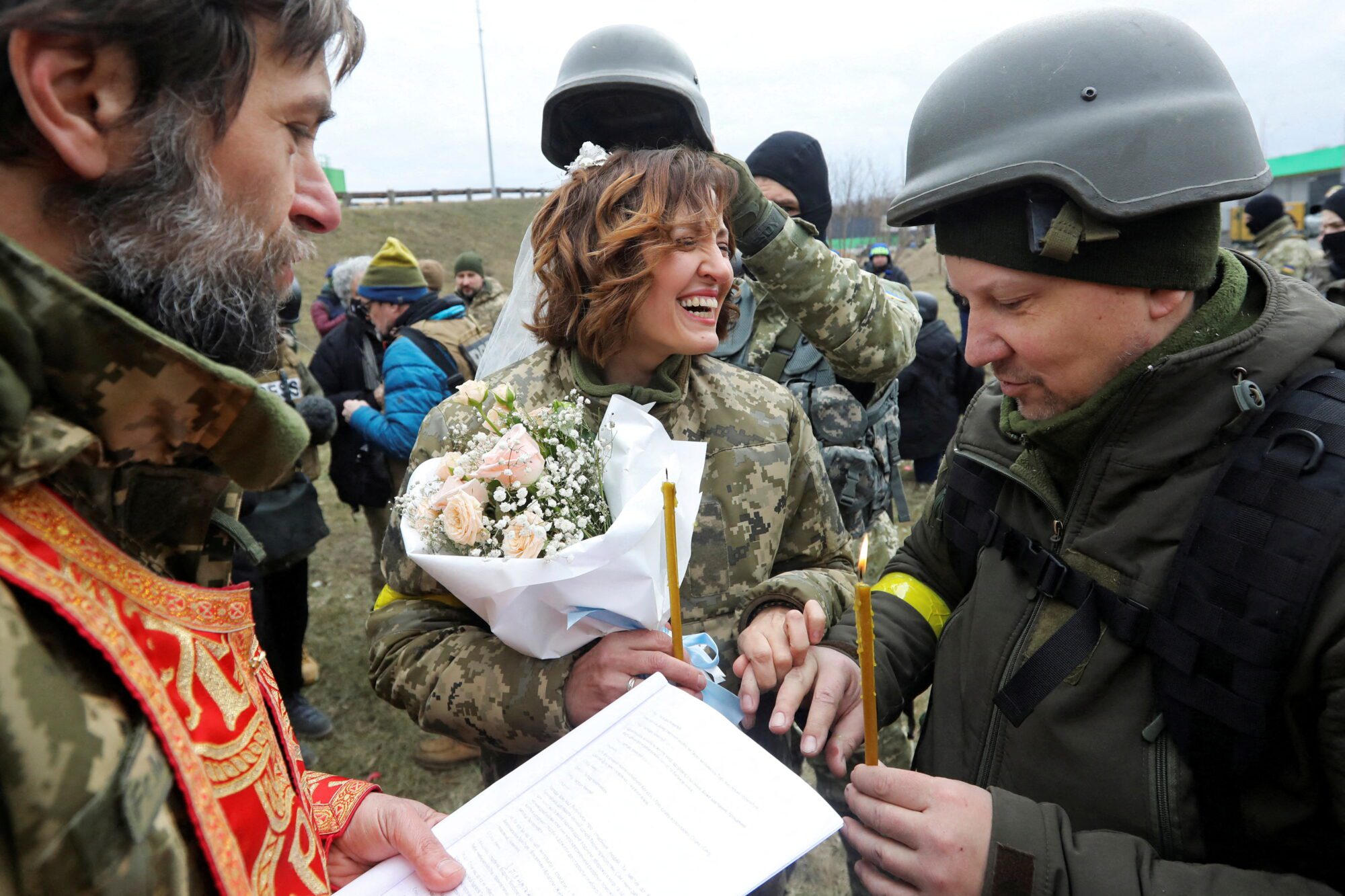
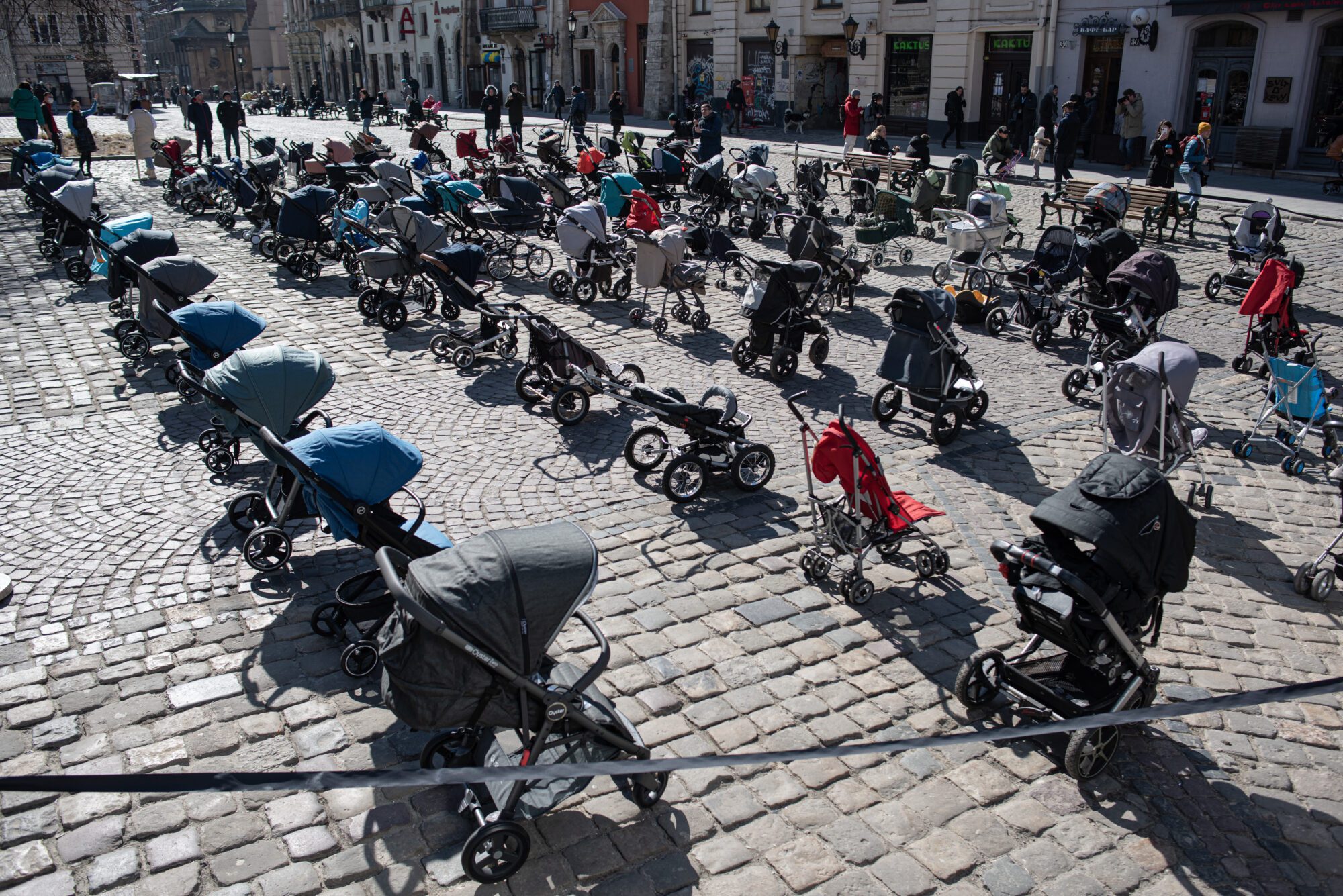
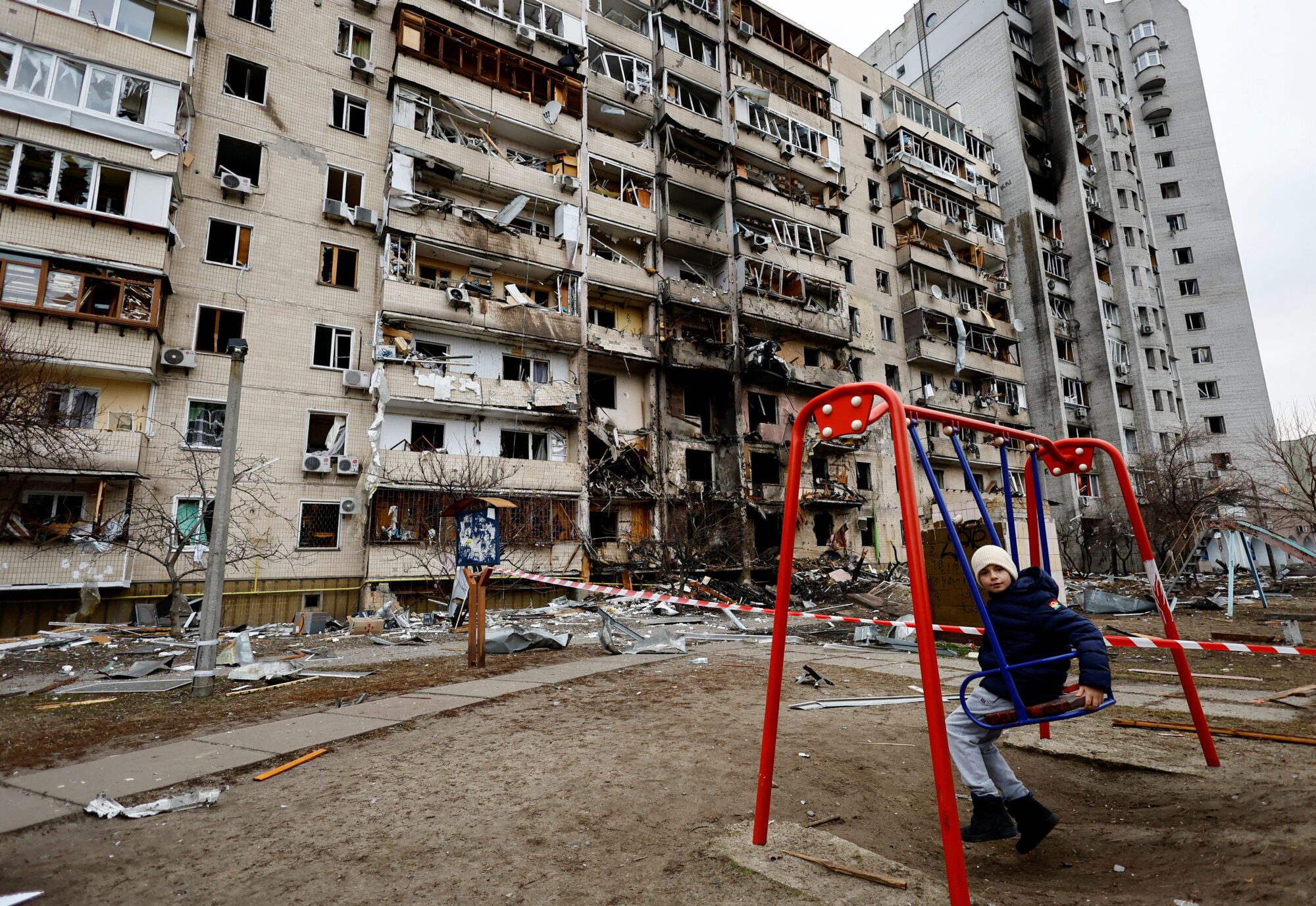
A child sits on a swing in front of a damaged residential building, after Russia launched a massive military operation against Ukraine, in Kyiv, Ukraine February 25, 2022. REUTERS/Umit Bektas
A typical night for millions of Ukrainian kids after #Russia's Army came to #Ukraine to “liberate” them.#stoprussia #StandWithUkraine #ClosetheSkyoverUkraine pic.twitter.com/uaDSJzxJ40
— SPRAVDI — Stratcom Centre (@StratcomCentre) March 19, 2022
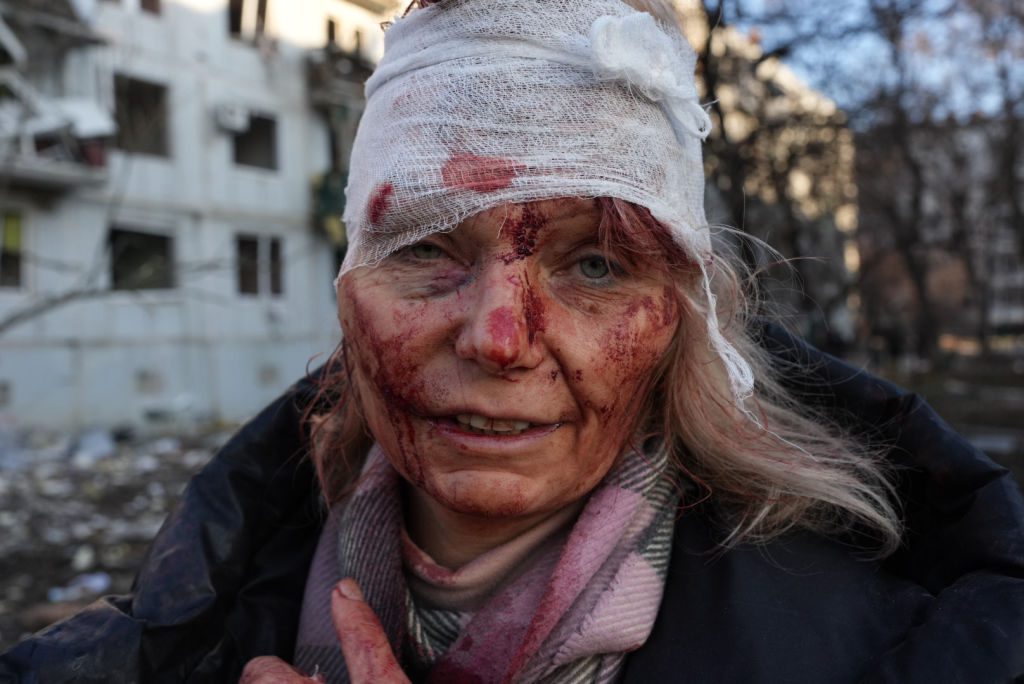
A wounded woman is seen as airstrike damages an apartment complex outside of Kharkiv, Ukraine on February 24, 2022. (Photo by Wolfgang Schwan/Anadolu Agency via Getty Images)
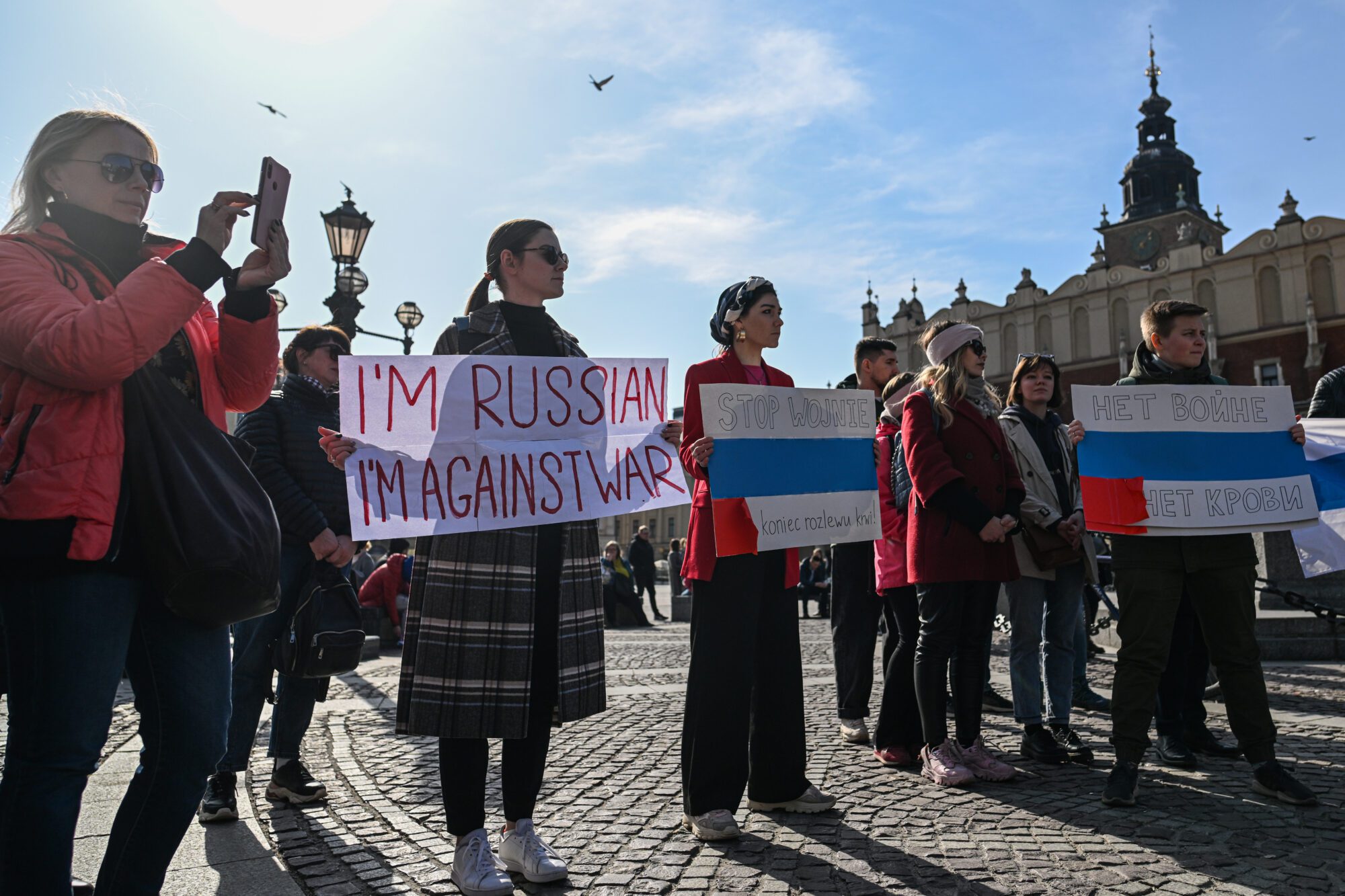
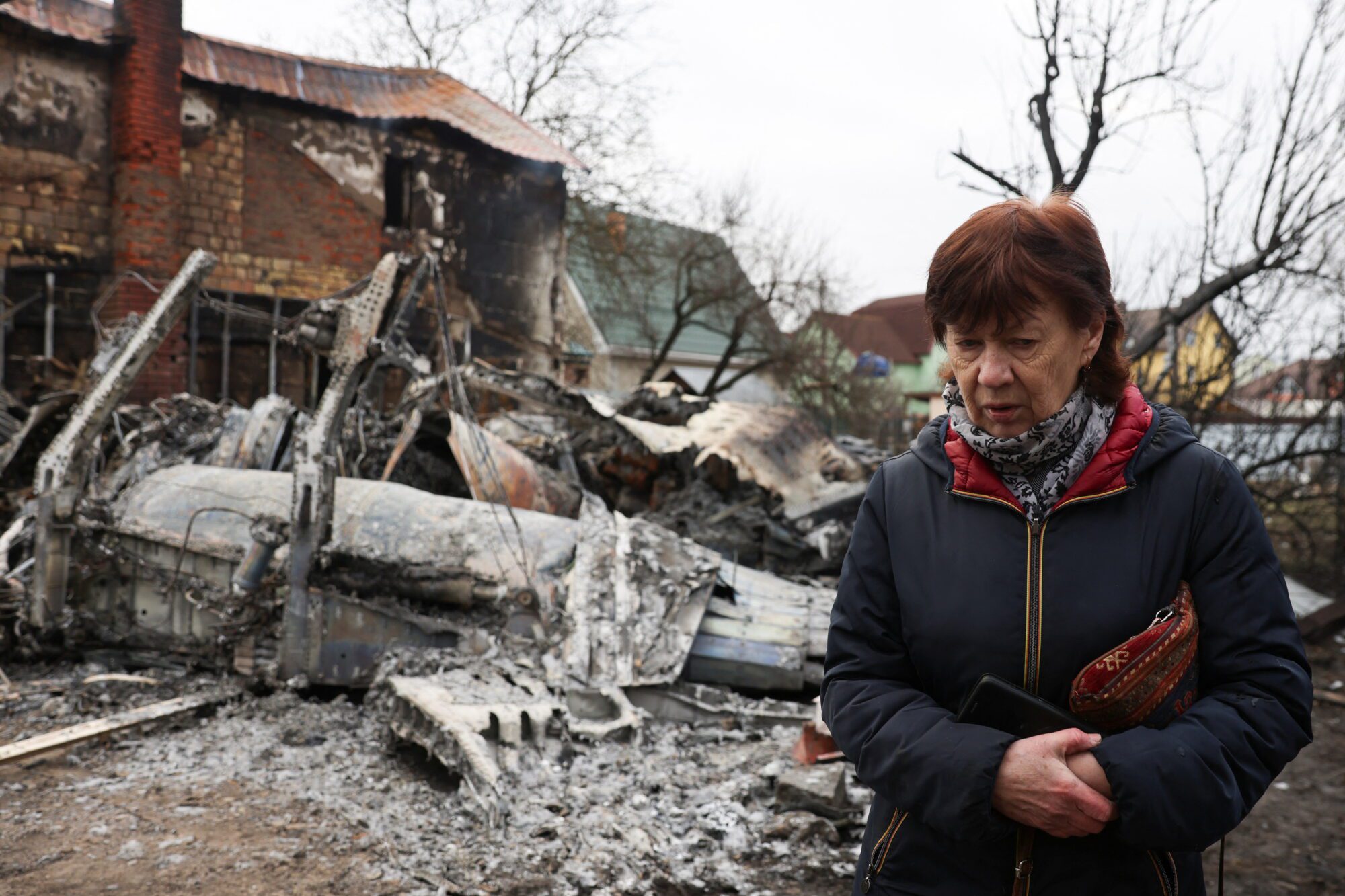
A woman walks around the wreckage of an unidentified aircraft that crashed into a house in a residential area, after Russia launched a massive military operation against Ukraine, in Kyiv, Ukraine February 25, 2022. REUTERS/Umit Bektas
“I just want to live in our country, and that’s all.” Julia, a teacher and Ukrainian volunteer, wept as she waited to be deployed to fight Russian troops around Kyiv on Saturday. “It’s awful,” she said. https://t.co/SbwaUeefty pic.twitter.com/cBwz7Tsvlh
— The New York Times (@nytimes) February 28, 2022


